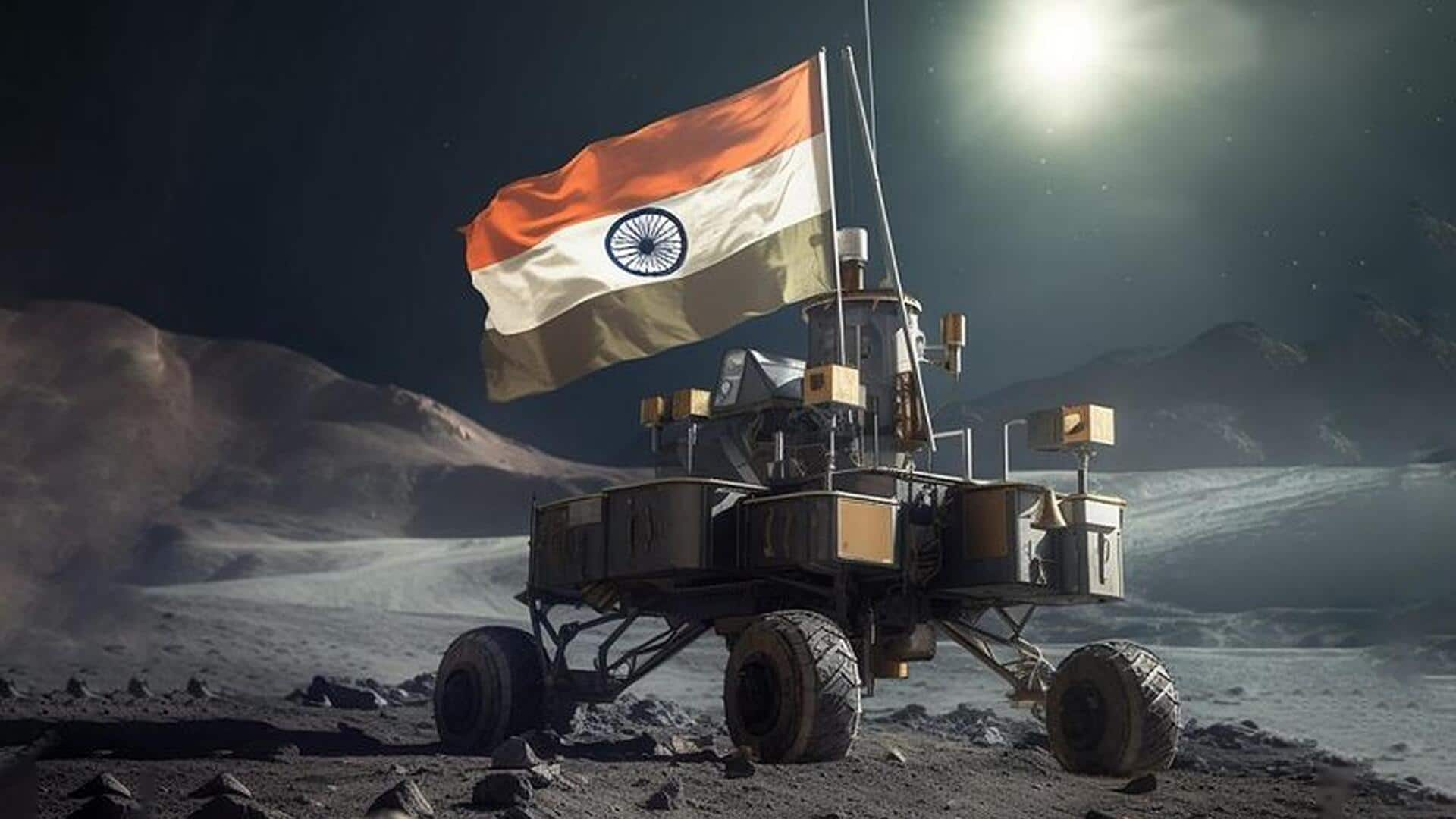
'Best is coming soon': Chandrayaan-3's Pragyan is uncovering Moon's secrets
What's the story
On August 23, Chandrayaan-3 made history by becoming the first mission to land near the Moon's south pole. That feat also made India only the fourth country to achieve a controlled landing on the Moon. In the latest, the Indian Space Research Organisation (ISRO) confirmed that Vikram lander and Pragyan are in "good health," further adding that "the best is coming soon." Here, we take a look at the mission's progress since the touchdown.
Twitter Post
Pragyan may soon reveal secrets of the Moon
Hello earthlings! This is #Chandrayaan3's Pragyan Rover. I hope you're doing well. I want to let everyone know that I'm on my way to uncover the secrets of the Moon 🌒. Me and my friend Vikram Lander are in touch. We're in good health. The best is coming soon...#ISRO pic.twitter.com/ZbIgvy22fv
— LVM3-M4/CHANDRAYAAN-3 MISSION (@chandrayaan_3) August 29, 2023
Operations
Chandrayaan-3 objectives: Landing, roving, performing scientific investigations
Since its successful landing, Chandrayaan-3's Vikram lander deployed the Pragyan rover which then took a "moonwalk," successfully demonstrating roving on the Moon, fulfilling the second of the mission's three core objectives. The mission then started its exploration of the lunar south pole, which is believed to contain water ice. In addition, Chandrayaan-3 also sent back captivating videos of the lunar environment. It will continue its exploration throughout the two-week-long stay.
Details
ChaSTE experiment to help estimate temperature at Moon's south pole
One of the mission's payloads, called ChaSTE (Chandra's Surface Thermophysical Experiment) which is present on the lander, aims to measure temperature profiles of the lunar south pole using a temperature probe and 10 individual sensors. This research will help scientists better understand the thermal behavior of the Moon's surface. ChaSTE has already provided the "first" temperature profile for the lunar south pole, with detailed observations still underway.
Twitter Post
The first temperature profile of lunar south pole
Chandrayaan-3 Mission:
— ISRO (@isro) August 27, 2023
Here are the first observations from the ChaSTE payload onboard Vikram Lander.
ChaSTE (Chandra's Surface Thermophysical Experiment) measures the temperature profile of the lunar topsoil around the pole, to understand the thermal behaviour of the moon's… pic.twitter.com/VZ1cjWHTnd
Crater
Pragyan rover recently maneuvered its way through a crater-laden terrain
Exploring the lunar south pole presents unique challenges due to its crater-covered terrain, which makes landing a difficult feat but Chandrayaan-3 accomplished that nonetheless. In a recent update on X, ISRO revealed that the Pragyan rover encountered a hazardous crater, measuring about 13 feet wide, during its journey. ISRO then commanded the rover to retrace its path to ensure safety. The rover's journey has been documented through images captured by its onboard cameras.
Twitter Post
The rover spotted a 4-meter wide crater
Chandrayaan-3 Mission:
— ISRO (@isro) August 28, 2023
On August 27, 2023, the Rover came across a 4-meter diameter crater positioned 3 meters ahead of its location.
The Rover was commanded to retrace the path.
It's now safely heading on a new path.#Chandrayaan_3#Ch3 pic.twitter.com/QfOmqDYvSF